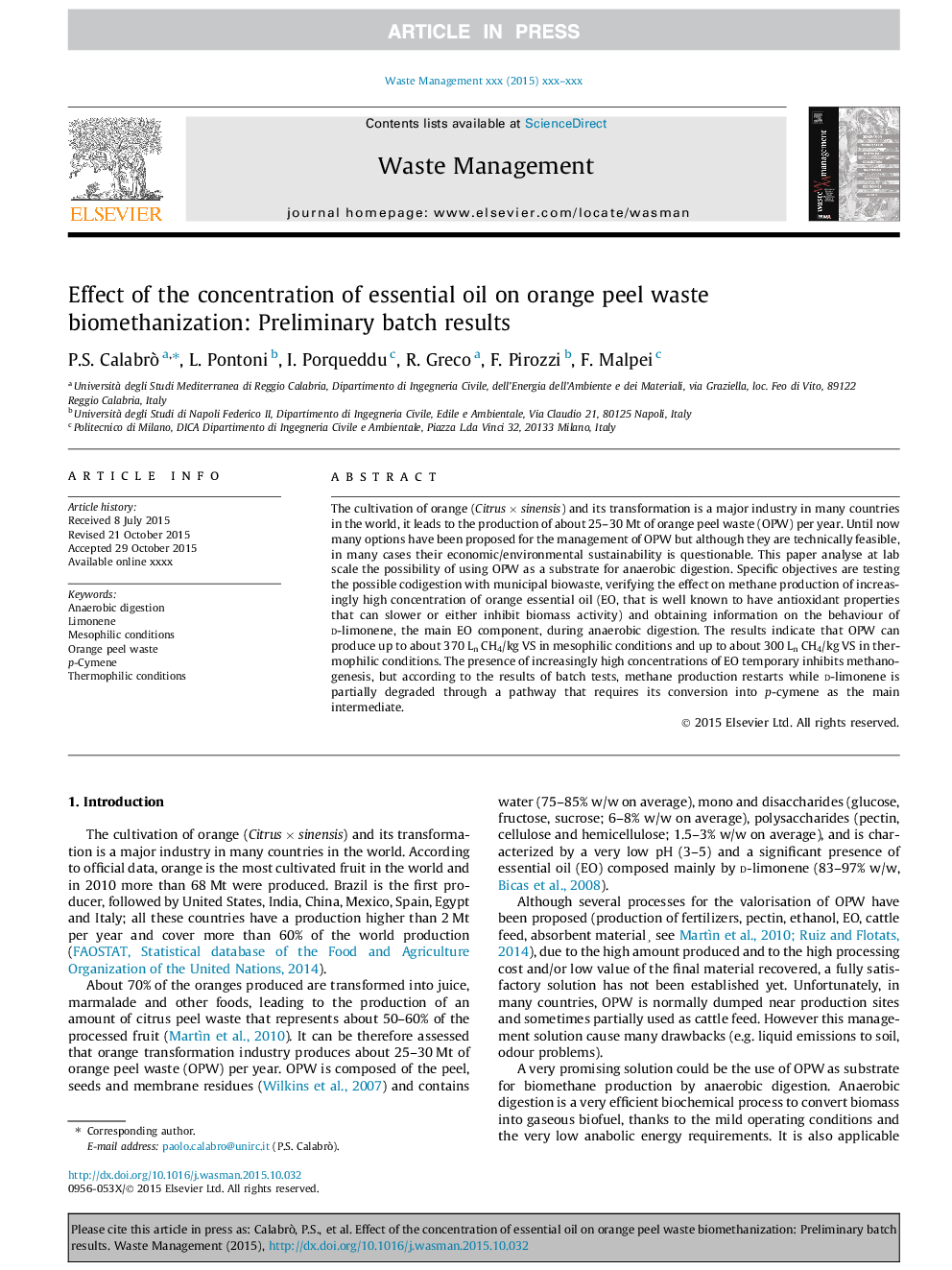| Article ID | Journal | Published Year | Pages | File Type |
|---|---|---|---|---|
| 6354181 | Waste Management | 2016 | 8 Pages |
Abstract
The cultivation of orange (Citrus Ã sinensis) and its transformation is a major industry in many countries in the world, it leads to the production of about 25-30 Mt of orange peel waste (OPW) per year. Until now many options have been proposed for the management of OPW but although they are technically feasible, in many cases their economic/environmental sustainability is questionable. This paper analyse at lab scale the possibility of using OPW as a substrate for anaerobic digestion. Specific objectives are testing the possible codigestion with municipal biowaste, verifying the effect on methane production of increasingly high concentration of orange essential oil (EO, that is well known to have antioxidant properties that can slower or either inhibit biomass activity) and obtaining information on the behaviour of d-limonene, the main EO component, during anaerobic digestion. The results indicate that OPW can produce up to about 370 Ln CH4/kg VS in mesophilic conditions and up to about 300 Ln CH4/kg VS in thermophilic conditions. The presence of increasingly high concentrations of EO temporary inhibits methanogenesis, but according to the results of batch tests, methane production restarts while d-limonene is partially degraded through a pathway that requires its conversion into p-cymene as the main intermediate.
Keywords
Related Topics
Physical Sciences and Engineering
Earth and Planetary Sciences
Geotechnical Engineering and Engineering Geology
Authors
P.S. Calabrò, L. Pontoni, I. Porqueddu, R. Greco, F. Pirozzi, F. Malpei,
